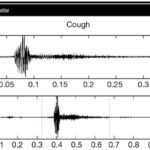Nosebleeds, also known as epistaxis, are a common occurrence. They happen when the delicate blood vessels lining the inside of your nose rupture. While often harmless, understanding the causes, symptoms, and first-aid management of nosebleeds is essential. This article explores why we get nosebleeds and provides practical advice for handling them.
Common Causes of Nosebleeds
Several factors can contribute to nosebleeds. Some of the most frequent causes include:
- Dry Air: Dry air can irritate and dry out the nasal membranes, making the blood vessels more susceptible to breaking. This is especially common in dry climates or during the winter months when indoor heating systems are in use.
- Nose Picking: This common habit can damage the delicate blood vessels in the nose, leading to bleeding.
- Trauma or Injury: A blow to the nose, even a minor one, can cause a nosebleed. This is often seen in contact sports or accidents.
- Allergies: Allergic reactions can cause inflammation and congestion in the nasal passages, increasing the risk of nosebleeds. Hay fever is a common culprit.
- Infections: Upper respiratory infections, such as colds or sinus infections, can irritate the nasal lining and lead to bleeding.
- Foreign Objects: Children sometimes insert small objects into their nostrils, which can damage the nasal lining and cause bleeding.
- Medications: Certain medications, such as blood thinners, can increase the likelihood of nosebleeds.
Recognizing the Symptoms of a Nosebleed
Nosebleeds are usually easily recognizable. Common symptoms include:
- Bleeding from one or both nostrils.
- A feeling of liquid running down the back of the throat.
- Frequent swallowing.
Effective First-Aid for Nosebleeds
Most nosebleeds can be managed at home with simple first-aid measures:
- Stay Calm: Reassure the person, especially if it’s a child, as anxiety can worsen bleeding.
- Sit Upright and Lean Forward: This position helps prevent blood from flowing down the throat.
- Apply Pressure: Pinch the soft part of the nose, just below the bony bridge, for at least 10 minutes. Breathe through the mouth during this time.
- Cold Compress: Apply a cold compress to the forehead or neck to help constrict blood vessels.
- Avoid Nose Blowing or Picking: After the bleeding stops, avoid blowing or picking the nose for several hours to allow the clot to form.
When to Seek Medical Attention
While most nosebleeds are not serious, it’s important to seek medical attention if:
- Bleeding lasts longer than 20 minutes despite applying pressure.
- Bleeding is heavy or causes significant blood loss.
- Bleeding is accompanied by other symptoms, such as dizziness, weakness, or difficulty breathing.
- Nosebleeds become frequent or recurrent.
Conclusion
Nosebleeds are a common problem with various causes, often easily managed with basic first aid. Understanding the causes and knowing how to respond can help alleviate anxiety and ensure proper care. However, persistent or severe nosebleeds warrant medical attention to rule out underlying issues and ensure appropriate treatment.
